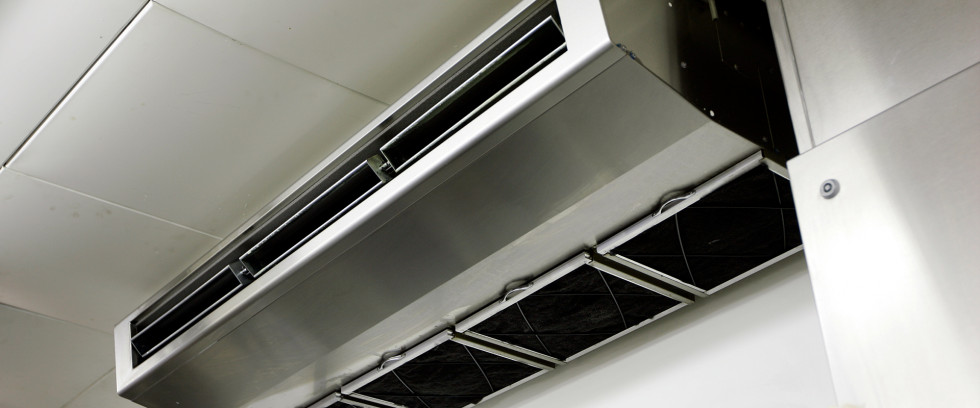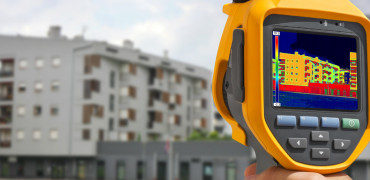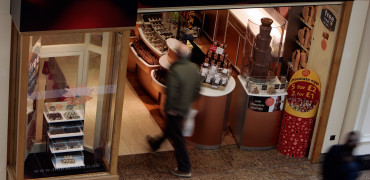When it comes to making the perfect pancake there are a few rules – a hot pan that is well oiled, a batter that isn’t over mixed, timing the flip so it isn’t too early and always expecting the first one to go wrong.
In fact the art of making a pancake can be quite specific and in many cases scientific when you look into the gluten and carbon dioxide gas reactions caused to create this delicious treat.
In the Mitsubishi Electric canteen kitchen however, the science in both pancake making and food preparation in general has a lot to do with the HVAC specifications, making it a model example of how a professional kitchen should operate.
Creating the perfect kitchen
Designing any kitchen whether it’s domestic or commercial can be challenging. When it comes to commercial kitchens however there is a lot to consider from energy efficiency, to ergonomics, to the appropriate size for the capacity of customers being served. There are also health and safety regulations that have to be adhered to which is greatly affected by both the equipment being used and the HVAC systems installed.
If you can't stand the heat, get out of the kitchen
Chefs all over the world work in hot kitchens which are can be bad for health reasons as well as posing a serious challenge for efficiency, safety, production and quality. And with poor exhaust and ventilation, grease build up can potentially make for an even more harmful environment.
Kitchens are one of the most important places in a building to have both effective ventilation and suitable air conditioning – not only because it’s one of the most intense environments to work in. However in order to be effective these HVAC systems have to be designed to withstand grease, steam, smell and of course heat in order to balance both the air flow and temperature.
In fact this type of ineffective HVAC system can even cause kitchen staff to leave due to uncomfortable working conditions and clashes with other staff members due to the build-up of heat stress related issues.
Waiter, my food is cold
Poor HVAC systems in kitchens can also affect the quality of the food being prepared. An unbalanced airflow means cooking surface temperatures are uneven and food storage is compromised, shortening the life of expensive produce like meat and dairy.
This issue is not only unpleasant for staff and customers but it can also affect the turnover of a business by creating a high percentage of food waste, causing unhappy customers to request a refund and increasing utility bills due to poor system efficiency.
The solution
In order to combat poor efficiency and grease build up, an indoor ceiling suspended air conditioning unit built with durable stainless steel is the ideal solution as the material (and high performance filters) is resistant to oil and smoke and is also easy to clean – even in kitchens that use open flame cooking.
This unique air conditioning unit has been designed with professional kitchens in mind as the easy cleaning and maintenance is ideal for preserving excellent hygiene and the filtration system is 1.5 times more efficient that conventional filters.
Effective air conditioning however isn’t just about the unit you place indoors, connecting the unit to a Power Inverter Heat Pump system offers high seasonal efficiency, advance control options and quiet operation, enhancing both the working environment for staff and lowering high utility bills for the business.
This system has been used by kitchens all over the world (including the Mitsubishi Electric kitchen) to combat the issues associated with a high temperature environment.
“The kitchen at Mitsubishi Electric is one of the most comfortable environments I have worked in due to how well the air conditioning system regulates the temperature and how we can control it based on the variation of our daily requirements”. - Joed Kemel, Chef & Catering Manager
On Pancake Day the Mitsubishi Electric kitchen dished up 200 pancakes to staff, and while the pan was hot, the kitchen coped with the heat extremely well.

Luke Fisher is Corporate Solutions Business Development Manager at Mitsubishi Electric
If you have any questions about this article, you can contact us via email. Or if you would like to tweet us, please follow our MEUK_LES twitter page.
We upload new articles every week so remember to check back regularly.
You can also sign up for our monthly newsletter below.

